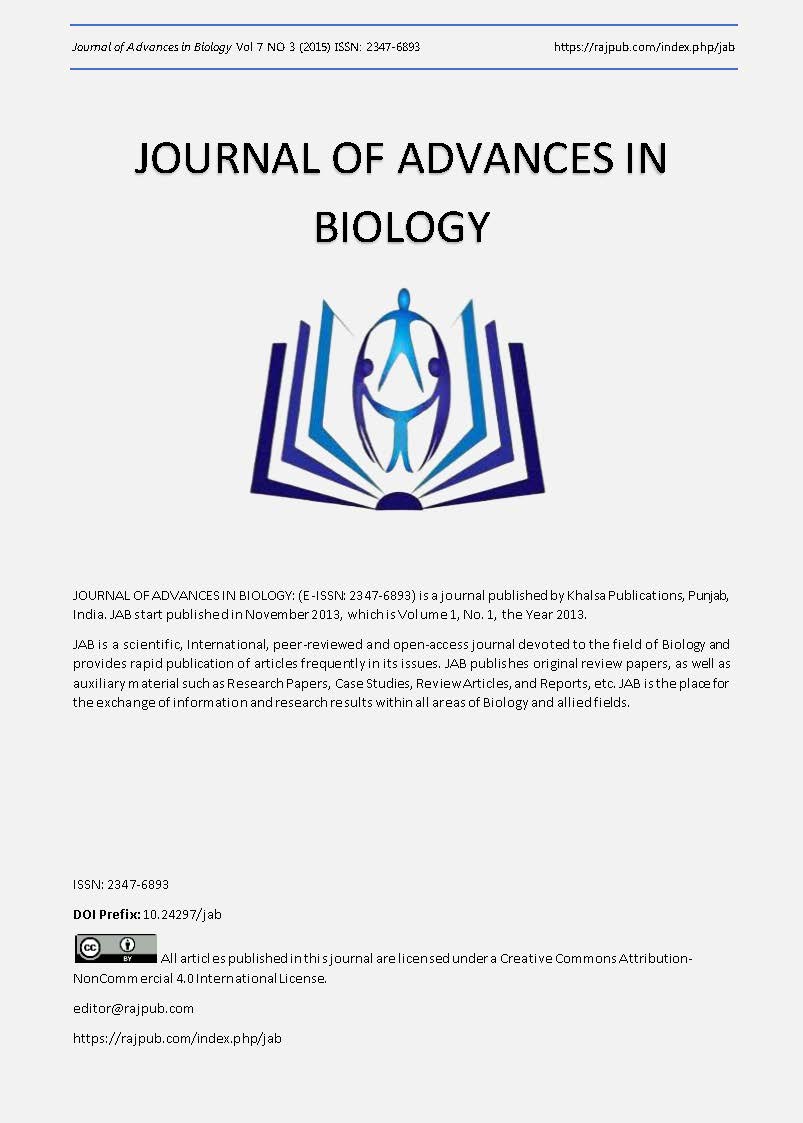DOES ORGANIC MANAGEMENT INFLUENCE THE VERTICAL DISTRIBUTION OF SOIL ORIBATID MITES?
DOI:
https://doi.org/10.24297/jab.v7i3.4586Abstract
The main goal of the present study was to answer the question raised: Does organic management influence the vertical distribution of soil oribatid mites? To obtain answer of this question, two fields (three independently plots for each) were selected for this study. at a farm of Al-Fayoum, Egypt (290 19 12 N and 300 48 E). The conventional field (CMS) was chosen as a reference site. The second field was subjected to organically managed system (OMS). During sampling the two fields had the same vegetation cover (clover, Trifolium alexandrina). Fifteen random soil samples were collected from each plot at three depths (0-4 cm, 4-8 cm and 8-12 cm) every month. The experiment carried out on October 2013 to March 2014. The obtained results revealed that a species was not influenced to OMS e.g. Rhysotritia ardua ardua. Three other species had a negative response to OMS e.g. Epilohmannia Cylindrica, Oppiella nova and Zygoribatula exarata and other species had a positive response e.g. Lohmannia loebli, Javacarus kuhneltii, Niloppia sticta, Tectocepheus velatus, Lamellobates h. aegyptica, Xylobates capucinus Galumna gharbiensis and Scheloribates laevigatus. The mean number of total oribatid mite individuals was significantly higher in the OMS plots than in the CMS. In OMS, density of oribatid mites decreased with soil depth in most studied months except in March the density of mites concentrated in the middle soil layer (4-8 cm depth). While in CMS, oribatid mites prevailed in the middle layer (4-8 cm depth) and decreased in number with soil depth (8-12 cm depth). It was found that the total number of oribatid mites in OMS decreased with increasing soil depth. Oribatid mite species showed a different pattern of vertical distribution in the studied sites where the most species tend to be found in the upper most stratum in organically management system. Tis may be contributed to organic matter content, porosity of soil and Herbs create a favorable circumstances that enhance to the upward movements of mites into uppermost layer. However, in conventional management system, these species showed a downward migration into a mean depth range from 2.6 to 6.7cm due to herbicides application in CMS plot that makes mite individuals migrate into the deepest soil depth to avoid it. . It can be concluded that OMS had a marked influence on vertical distribution of soil oribatid species as compared with that of CMS.
Downloads
Downloads
Published
How to Cite
Issue
Section
License
 All articles published in Journal of Advances in Linguistics are licensed under a Creative Commons Attribution 4.0 International License.
All articles published in Journal of Advances in Linguistics are licensed under a Creative Commons Attribution 4.0 International License.




